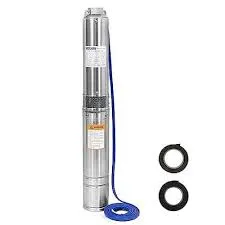Oct . 15, 2024 02:25 Back to list
sewage submersible pump
Understanding Sewage Submersible Pumps Function and Importance
Sewage submersible pumps are a vital component in the management of wastewater and are widely used in various applications where the removal of sewage is essential. Unlike standard pumps, these submersible units are designed to be submerged in the liquid they are pumping, which characterizes their unique functionality and operational capability.
How Sewage Submersible Pumps Work
Sewage submersible pumps operate by using a hermetically sealed motor that is coupled to the pump body. These pumps are typically installed in a wet well, which is a basin that collects sewage or wastewater. When the liquid level in the wet well rises to a certain point, the float switch activates the pump. Once engaged, the impeller inside the pump begins to spin, drawing sewage into the pump through inlet openings and discharging it through an outlet pipe.
The design of these pumps allows them to handle mixtures of sewage, including solids and debris, without clogging. This makes them particularly effective for situations where raw sewage is present, such as in residential and commercial buildings, sewage treatment plants, and municipal wastewater facilities. The ability to handle solids typically up to 3 inches in diameter depending on the pump size makes them indispensable.
Advantages of Sewage Submersible Pumps
One of the primary advantages of sewage submersible pumps is their efficiency in preventing flooding and managing overflow. By relocating sewage to treatment facilities in a timely manner, these pumps play a critical role in safeguarding public health and protecting the environment. Furthermore, their design allows for quieter operation compared to above-ground pumps, which can be significant in residential areas.
sewage submersible pump

Additionally, submersible pumps are relatively easy to install and maintain. They do not require extensive piping systems since they can be placed directly in the sewage, making them operable in confined spaces. Maintenance typically involves regular inspections and occasional cleaning of the impeller and check valves to ensure optimal performance.
Applications in Various Industries
The application of sewage submersible pumps extends beyond residential uses. In commercial settings, these pumps are crucial in managing effluent from restrooms, kitchens, and other areas where wastewater is generated. In industrial settings, they are employed in the removal of wastewater from processing operations, contributing to the overall efficiency and compliance with environmental regulations.
Sewage submersible pumps are also pivotal in construction sites where dewatering is necessary. They help to remove groundwater and surface water that accumulates during excavation, ensuring safe working conditions.
Conclusion
In summary, sewage submersible pumps are essential devices that facilitate the safe and efficient handling of sewage and wastewater. Their unique design makes them ideal for various applications, from residential environments to industrial sectors. Understanding the functionality, advantages, and applications of these pumps aids in appreciating their significant role in public health and environmental protection. As urbanization continues and the demand for effective wastewater management grows, the importance of sewage submersible pumps will only increase, making them a critical investment in infrastructure development and sustainability.
-
Submersible Water Pump: The Efficient 'Power Pioneer' of the Underwater World
NewsJul.01,2025
-
Submersible Pond Pump: The Hidden Guardian of Water Landscape Ecology
NewsJul.01,2025
-
Stainless Well Pump: A Reliable and Durable Pumping Main Force
NewsJul.01,2025
-
Stainless Steel Submersible Pump: An Efficient and Versatile Tool for Underwater Operations
NewsJul.01,2025
-
Deep Well Submersible Pump: An Efficient 'Sucker' of Groundwater Sources
NewsJul.01,2025
-
Deep Water Well Pump: An Efficient 'Sucker' of Groundwater Sources
NewsJul.01,2025
-
 Submersible Water Pump: The Efficient 'Power Pioneer' of the Underwater WorldIn the field of hydraulic equipment, the Submersible Water Pump has become the core equipment for underwater operations and water resource transportation due to its unique design and excellent performance.Detail
Submersible Water Pump: The Efficient 'Power Pioneer' of the Underwater WorldIn the field of hydraulic equipment, the Submersible Water Pump has become the core equipment for underwater operations and water resource transportation due to its unique design and excellent performance.Detail -
 Submersible Pond Pump: The Hidden Guardian of Water Landscape EcologyIn courtyard landscapes, ecological ponds, and even small-scale water conservancy projects, there is a silent yet indispensable equipment - the Submersible Pond Pump.Detail
Submersible Pond Pump: The Hidden Guardian of Water Landscape EcologyIn courtyard landscapes, ecological ponds, and even small-scale water conservancy projects, there is a silent yet indispensable equipment - the Submersible Pond Pump.Detail -
 Stainless Well Pump: A Reliable and Durable Pumping Main ForceIn the field of water resource transportation, Stainless Well Pump has become the core equipment for various pumping scenarios with its excellent performance and reliable quality.Detail
Stainless Well Pump: A Reliable and Durable Pumping Main ForceIn the field of water resource transportation, Stainless Well Pump has become the core equipment for various pumping scenarios with its excellent performance and reliable quality.Detail
